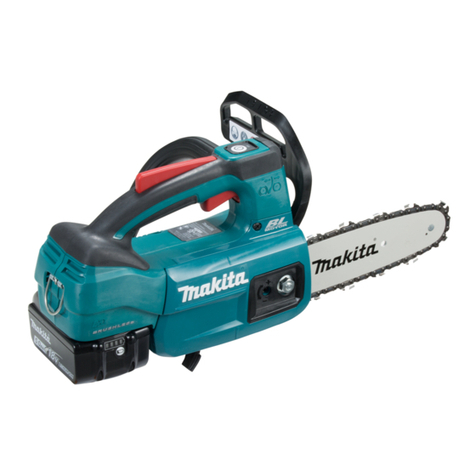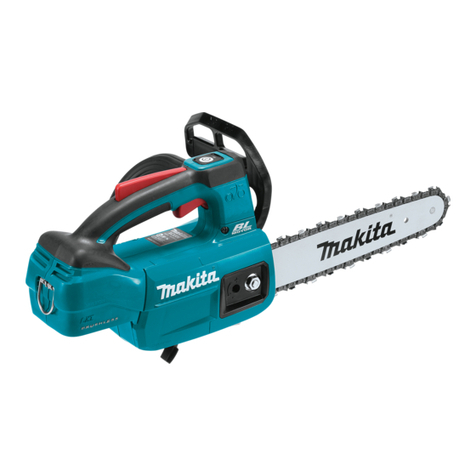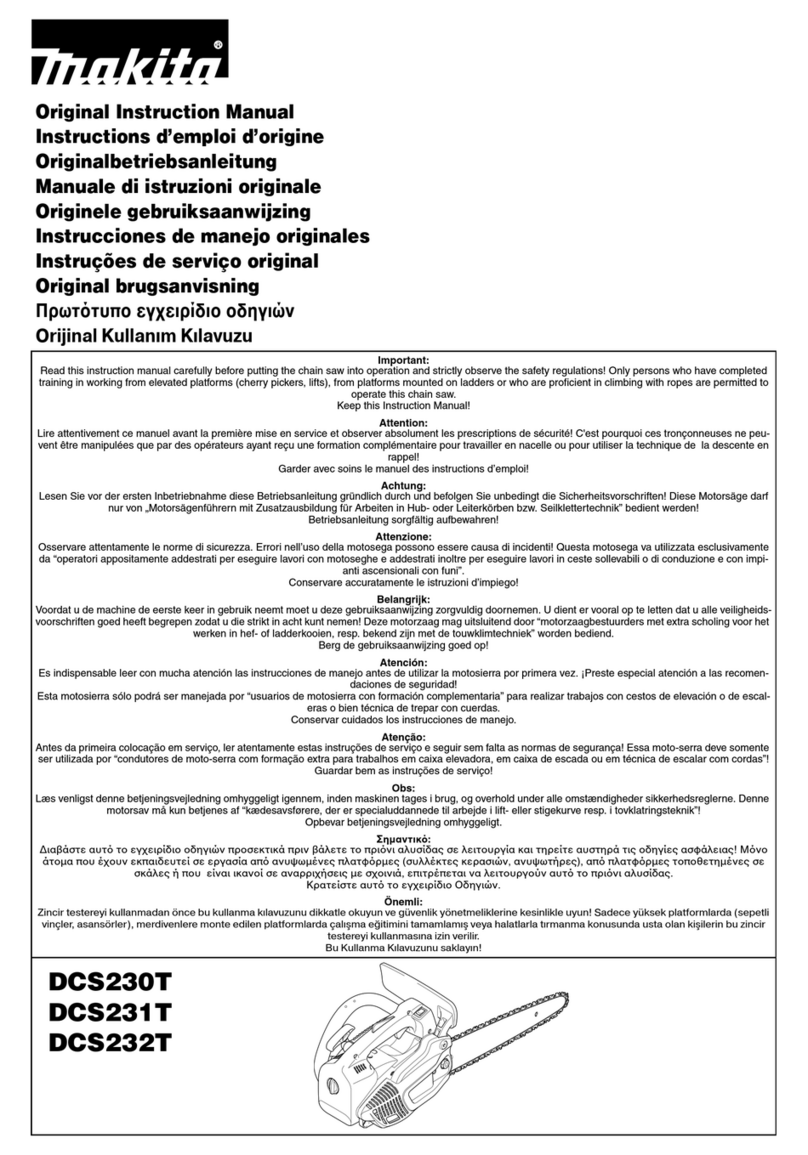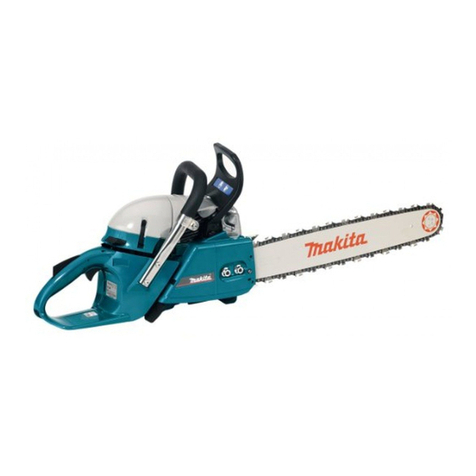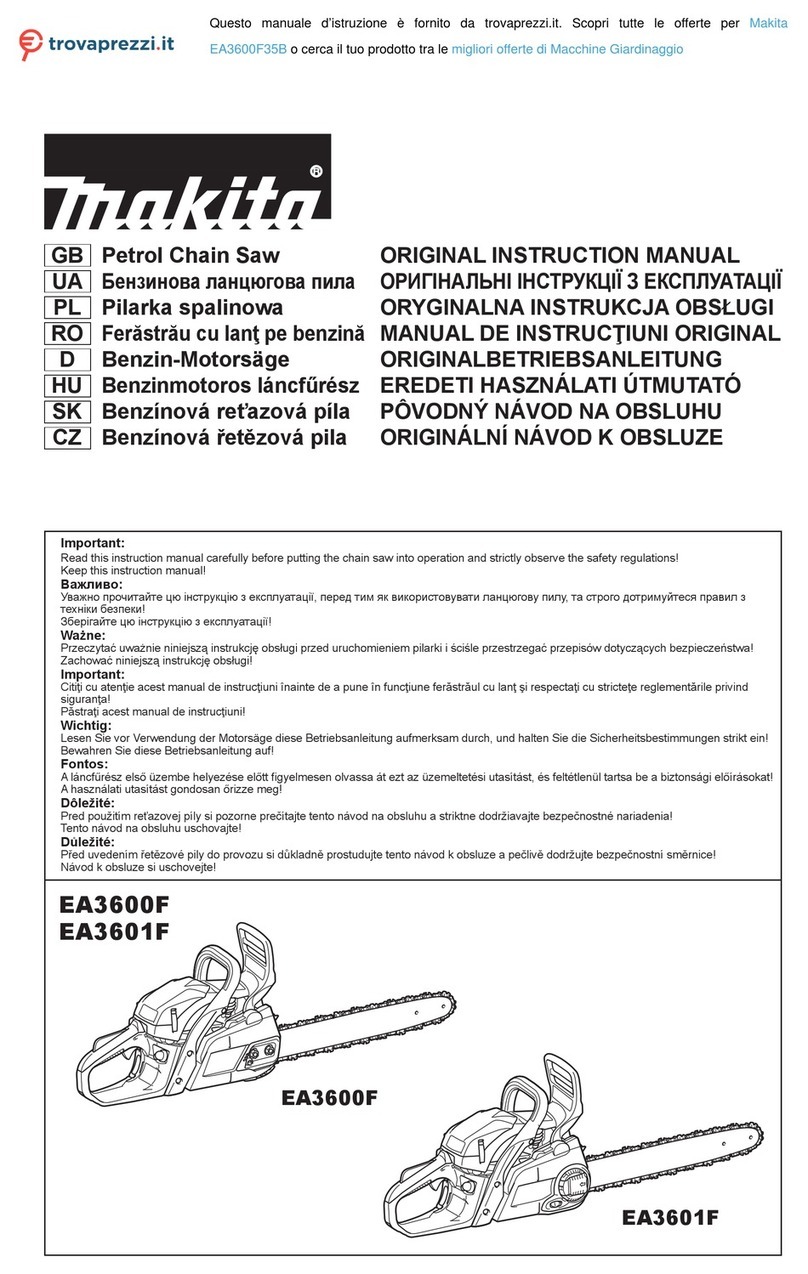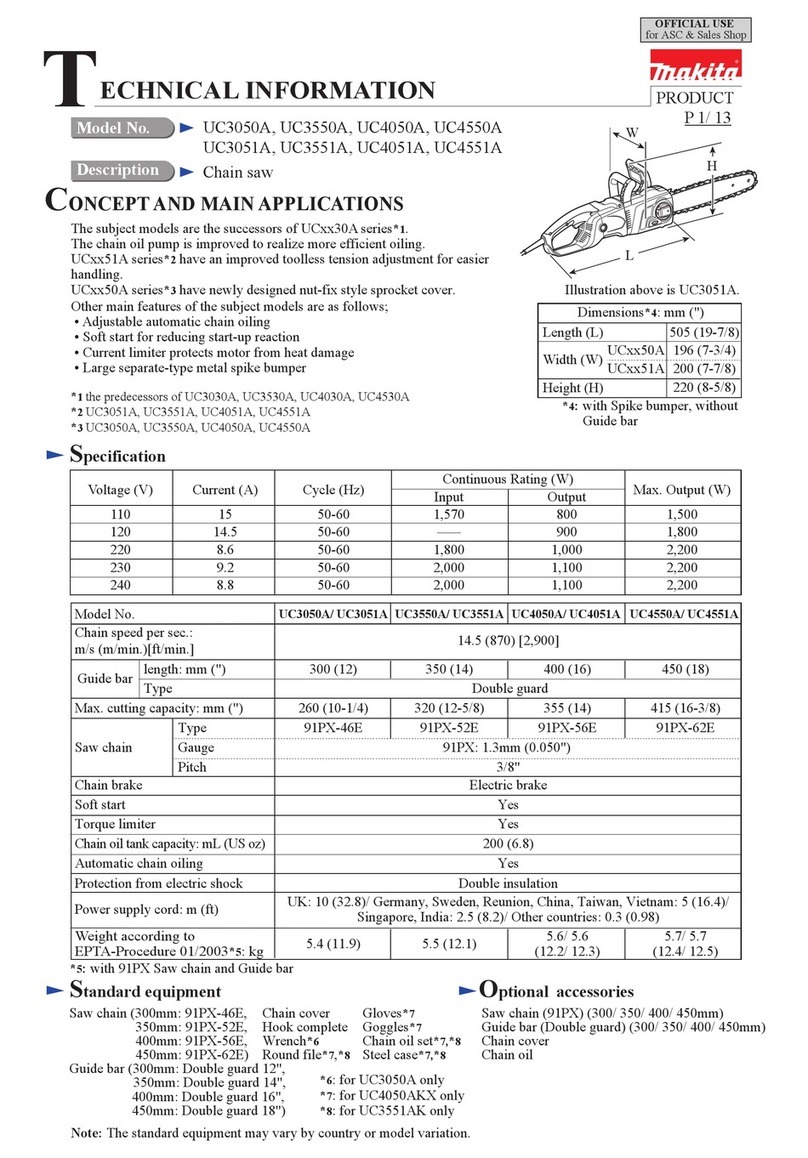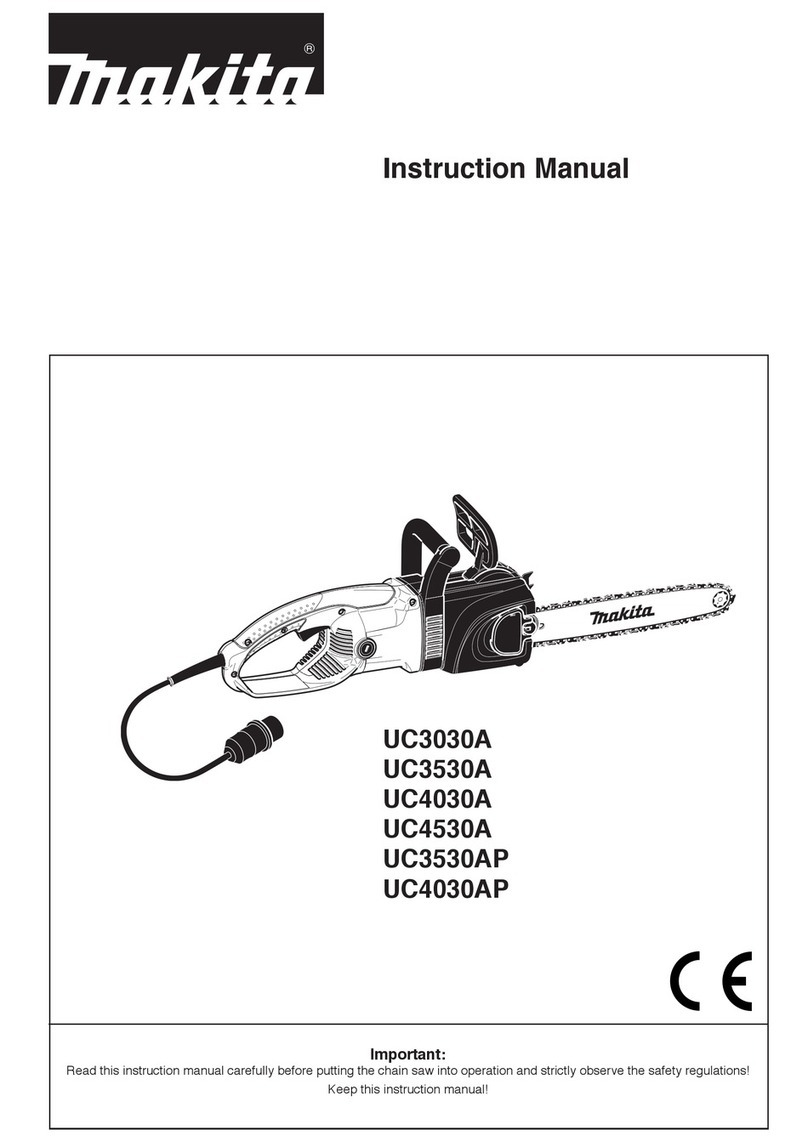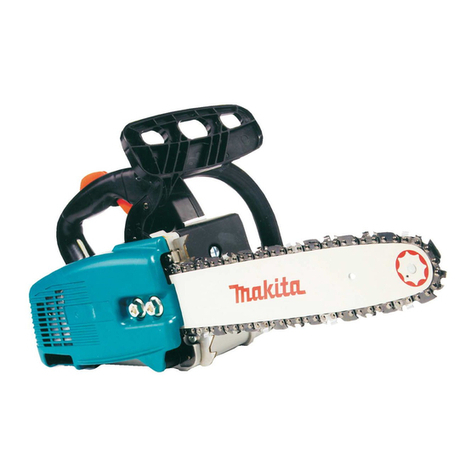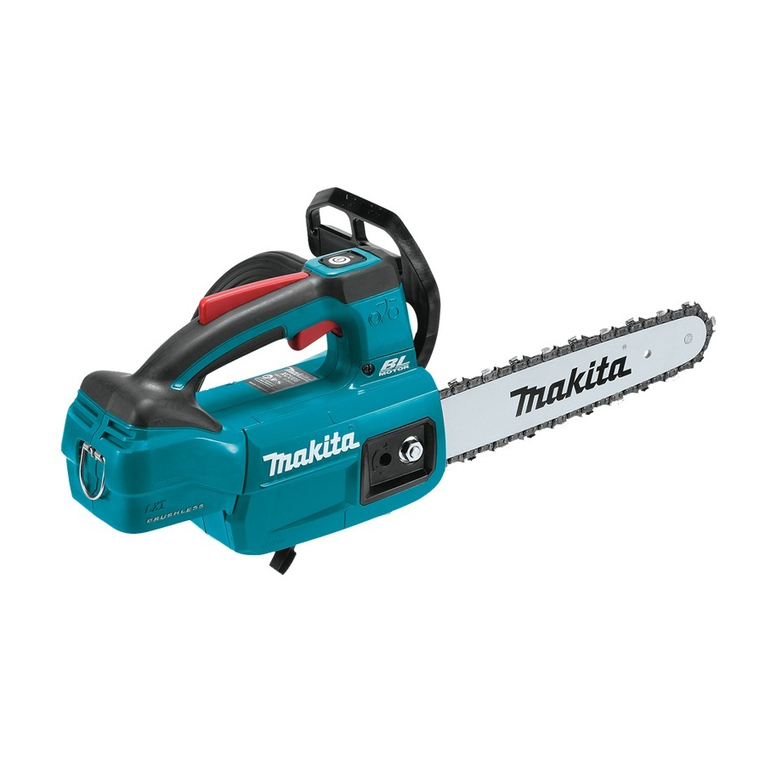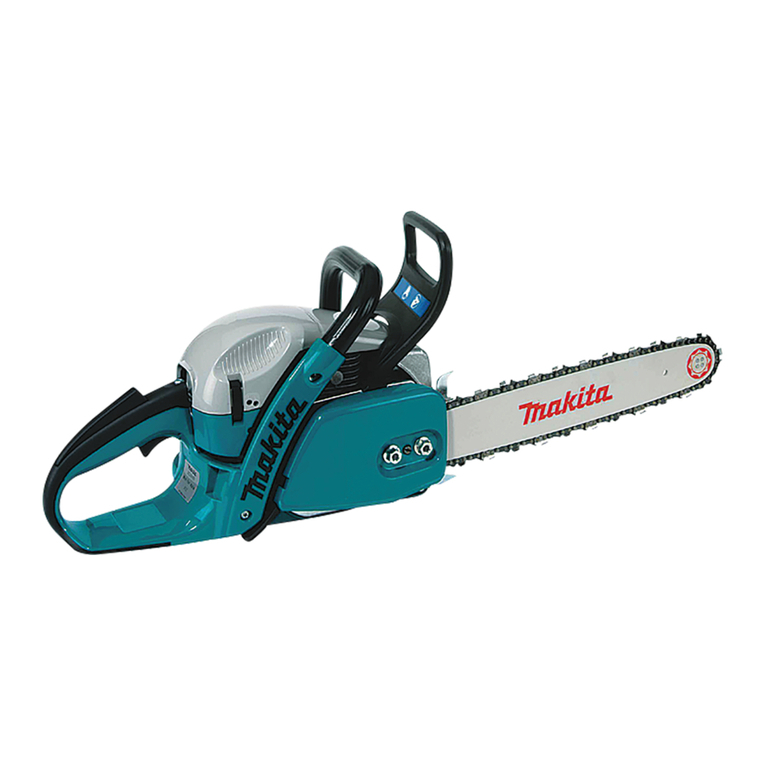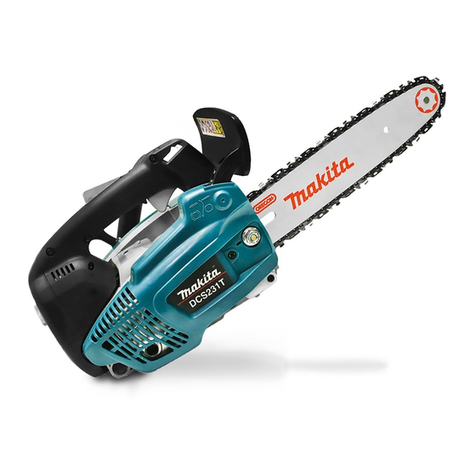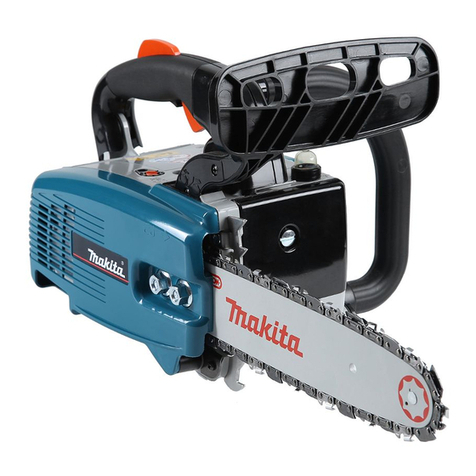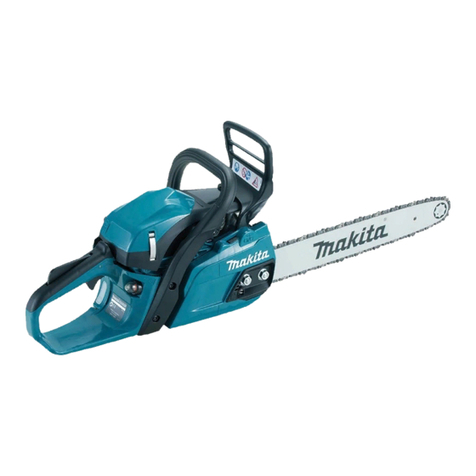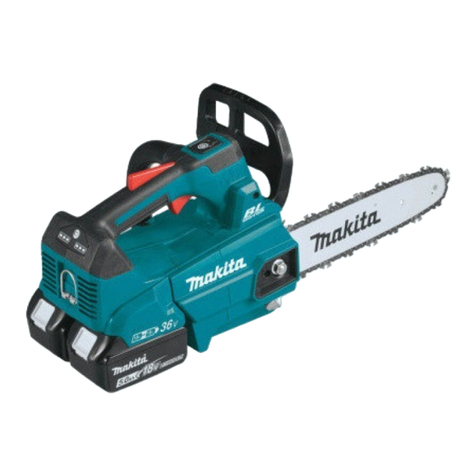
4
Safety precautions for chain saw operators
While operating the chain saw please observe the
followingrules:
a) Contact of the guide bar nose with any object
should be avoided.
b) Tip contact may cause the guide bar to move
suddenly upward and backward, which may
cause serious or fatal injury.
c) Always operate the chain saw with both hands.
WARNING!
Read and follow all safety precautions in the
Instruction Manual. Failure to follow instructions
couldresultinseriousinjury.Itisrecommendedto
lend the chain saw only to people who are
experienced in working with chain saws. Always
hand over the Owner’s and Safety Manual.
WARNING!
This chain saw is capable of severe kickback that
couldresultinseriousinjurytotheoperator.Donot
operate this chain saw unless you have
extraordinarycuttingneedsandexperienceinand
special training for dealing with kickback. Chain
saws with significantly reduced kickback potential
are available.
WARNING!
Kickback may occur when the nose or tip of the
guide bar touches an object, or when the wood
closesinandpinchesthesawchaininthecut.This
contact may abruptly stop the saw chain and in
some cases may cause a lightning fast reverse
reaction,kickingtheguidebarupandbacktowards
the user, or push the guide bar back towards the
operator.Kickback may cause you tolosecontrol
of the saw.
Asa chainsawuser,youcantakeseveralsteps to
reduce the risk of a kickback and potential injury.
A. With a basic understanding of kickback, you
canreduceoreliminatetheelementof surprise.
It is a sudden surprise that contributes to
accidents.
B. Keep a good firm grip on the saw with both
hands, your right hand on the rear grip and
yourlefthandonthe tubular handle, whenthe
engineis running. Useafirm gripwith thumbs
and fingers encircling the chain saw handles.
A firm grip can neutralize kickback and help
you maintain control of the saw. Don’t let go!
C. Make sure that the area in which you are
cutting isfreefromobstructions.Donotletthe
nose of the guide bar contact the log, branch,
or any other obstructions which could be hit
while you are operating the saw.
D. Donotoverreachorcutaboveshoulderheight.
E. Follow manufacturer’s sharpening and main-
tenanceinstructionsforthesawchain.
F. Only use replacement bars and chains speci-
fied by the manufacturer or the equivalent.
Additional safety precautions
The following additional safety precautions should be
observed by all users of chain saws:
1. Donotoperateachainsawwhenyouarefatigued.
2. Use safety footwear; snug-fitting clothing;
protective gloves; and eye, hearing, and head
protection devices.
3. Use caution when handling fuel. Move the chain
saw at least 10 feet (3 m) from the fueling point
before starting the engine.
4. Do not allow other persons to be near the chain
saw when starting or cutting with the chain saw.
Keep bystanders and animals out of the work
area.
5. Do not start cutting until you have a clear work
area, secure footing, and a planned retreat path
from the falling tree.
6. Keep all parts of your body away from the saw
chain when the engine is running.
7. Before you start the engine, make sure that the
saw chain is not contacting anything.
8. Carry the chain saw with the engine stopped, the
guide bar and saw chain to the rear, and the
muffler away from your body.
9. Do not operate a chain saw that is damaged, is
improperly adjusted, or is not completely and
securely assembled. Be sure that the saw chain
stops moving when the throttle control trigger is
released.
10. Shut off the engine before setting it down.
11. Use extreme caution when cutting small size
brushandsaplingsbecauseslendermaterial may
catch the saw chain and be whipped towardyou
or pull you off balance.
12. When cutting a limb that is under tension be alert
for springback so that you will not be struck when
the tension on the wood fibers is released.
13. Keepthe handlesdry, clean,and free ofoil orfuel
mixture.
14. Operate the chain saw only in well-ventilated
areas.
15. Do not operate a chain saw in a tree unless you
have been specifically trained to do so.
16. Allchainsawservice,otherthantheitemslisted in
the Owner’s Manual maintenance instructions,
should be performed by MAKITA . (For example,
if improper tools are used to remove the flywheel
or if an improper tool is used to hold the flywheel
inordertoremovetheclutchstructuraldamageto
the flywheel could occur and could subsequently
cause the flywheel to burst.)
17. When transporting your chain saw, use the chain
protection cover.
18. Low kickback bars and low kickback chains are
designedtoreducetheriskofkickbackinjury.Ask
your MAKITA dealer about these devices.


